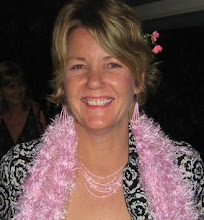
After watching a couple of digital literacy projects by Marco Antonio Torres, I asked myself, how could I implement this type of learning into my classroom. Clay animation came to mind. When my daughters were younger they use to spend hours modelling with clay, creating characters and scripting stories which they loved to share. Their creations were so detailed and their stories full of imagination.
In the classroom clay animations would be an exciting technology that would capture the imagination of students of all ages. Story telling can literally be brought to life. Today the tools for creating clay animations are either free or very inexpensive (Edson, 2006.)
Clay animation can work across many curriculum areas. According to The Arts Essential Learnings, the Media strand involves, “constructing meaning, considering intended audiences and intended purposes, by modifying media languages and technologies to create representations.” For example students can create backdrops and scenery using conventional or digital art forms using genre conventions to construct media texts (Queensland Studies Authority, 2009).
Clay animation is something that I would love to have a go at. Maybe I will try one at home with my “own’ students first. Reignite their creativity and imagination.
Cheers
Edson, E. (2006). Success for boys: Boys and ICT Module. Retrieved 18th August, 2009, from http://www.maryborougheducationcentre.vic.edu.au/successforboys/resources/pdf/ict/ict_resource14.pdf
The Queensland Studies Authority, (2009). Essential learnings: The arts. Retrieved 18th August, 2009, from http://www.qsa.qld.edu.au/learning/7262.html
Music in the Classroom:

A few weeks ago in an E-Learning tutorial we were made aware of the copyright laws and regulations and the implications surrounding them. Most of us, I’m assuming, took for granted that if you could download it from the internet then it was ok. Referencing them I don’t think so. A basic concept of copyright is that a copyright owner has exclusive rights to his or her work and only the owner, or those authorized by the owner, may copy, adapt, distribute, display or perform the work – with some very important exceptions. You need to obtain permission any time you want to use a copyright work unless your use fits one of the exceptions (Copyright Connection, 2000 -2006). Good news is there are Royalty free music and Royalty free image sites out there for us to use.
As one of Howard Gardner's major intelligence areas, music is valuable for its own sake as well as for what it can add to a lesson. A friend of a friend told me about a teacher who used music to inspire his class at the start of the day. He used a feel-good tune, which he called ‘music of the day’. He would write the name and composer of the music on the board, along with a ‘thought for the day’. He found that simply reading the ‘thought for the day’ out loud did not have a great effect. But when the ‘thought for the day’ was displayed alongside the ‘music of the day’, with the music playing, students began to take notice of both. They wanted to know exactly what the music was and who wrote or sang it, and then what the thought of the day was.
I would use this. I love music and I love inspirational quotes; I have them emailed to me every day. I’m going to try this in my two week block. I will keep you posted as to how it goes.
Copyright Connection, (2000 -2006). Using copyright. retrieved August 12th, 2009, from http://depts.washington.edu/uwcopy/Copyright_Connection/

Rhonda, that sounds like a great way of using multiple senses to produce your learning outcomes. Students of all ages enjoy hands on activities and including media technology and possibly if you incororate literacy though something like a script, you will have covered almost all of the learning domains.
ReplyDeleteI like the connections to the Essential Learnings, well done.